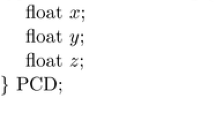Abstract
Extracting exact features from noisy point data is an important problem, in practice, for the application of reverse engineering. Several feature extraction methods have been used to handle noisy point data, such as the "angular" method and the "chordal" method. They work well for most cases, but the generation of extra features cannot be avoided for some cases. A new feature extraction method that deals with noisy scanned point data is proposed in this paper. We call it the iterative angular feature extraction (IAFE) method, since it extends the concept of the angular method. The IAFE method first distinguishes the feature regions from point clouds, then the iterative algorithm is applied to refine each feature region into ultimate feature points. A "noise dilution" concept is used to reduce the noise effect. A "multiple point" algorithm, an "angle variation" algorithm and an "iterations for convergence" algorithm are developed to implement the noise dilution concept. The IAFE(I) method for planar models and the IAFE(II) method for curved models are designed. The IAFE method demonstrated its usefulness in dealing with noisy point data.
Similar content being viewed by others
Author information
Authors and Affiliations
Corresponding author
Rights and permissions
About this article
Cite this article
Lee, K., Ning, W. Iterative Angular Feature Extraction (IAFE) Method for Reverse Engineering . Int. Journ. Adv. Manufac. Tech. 21, 850–856 (2003). https://doi.org/10.1007/s00170-002-1403-2
Issue Date:
DOI: https://doi.org/10.1007/s00170-002-1403-2




